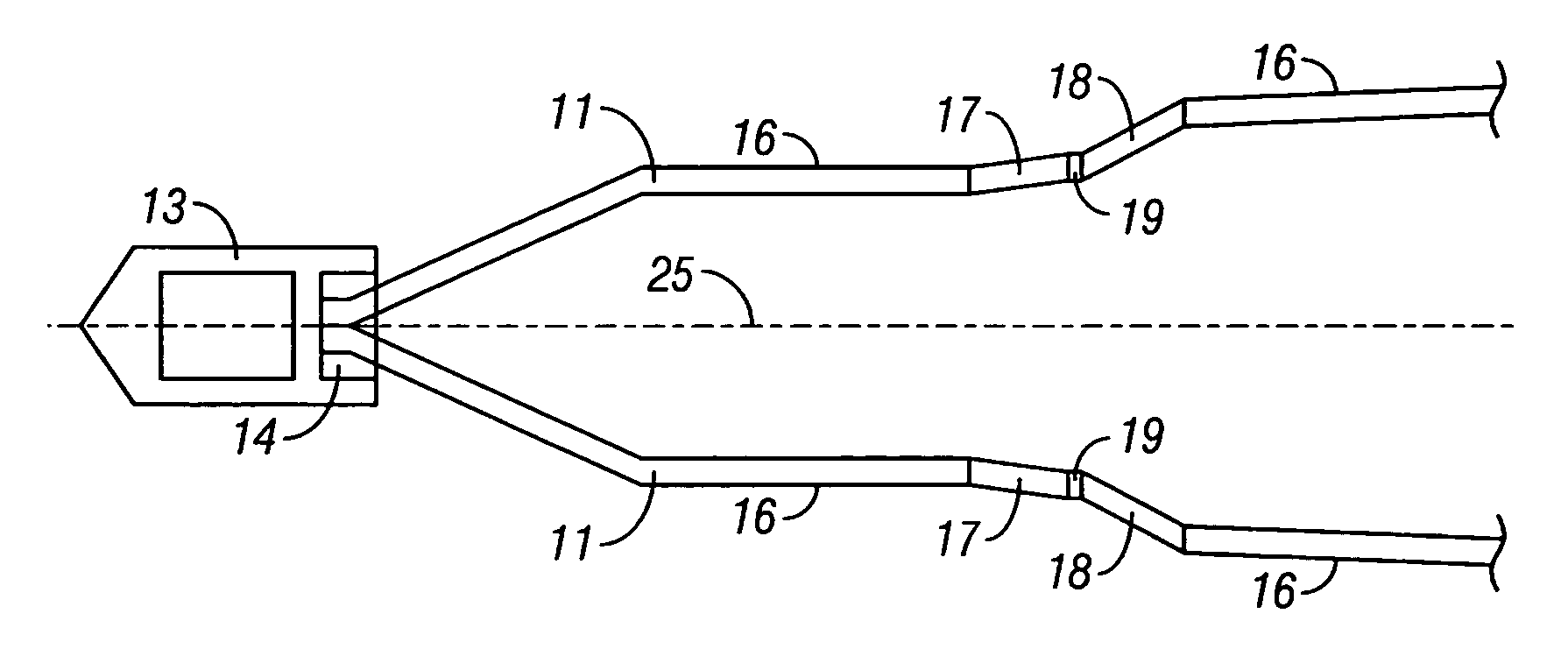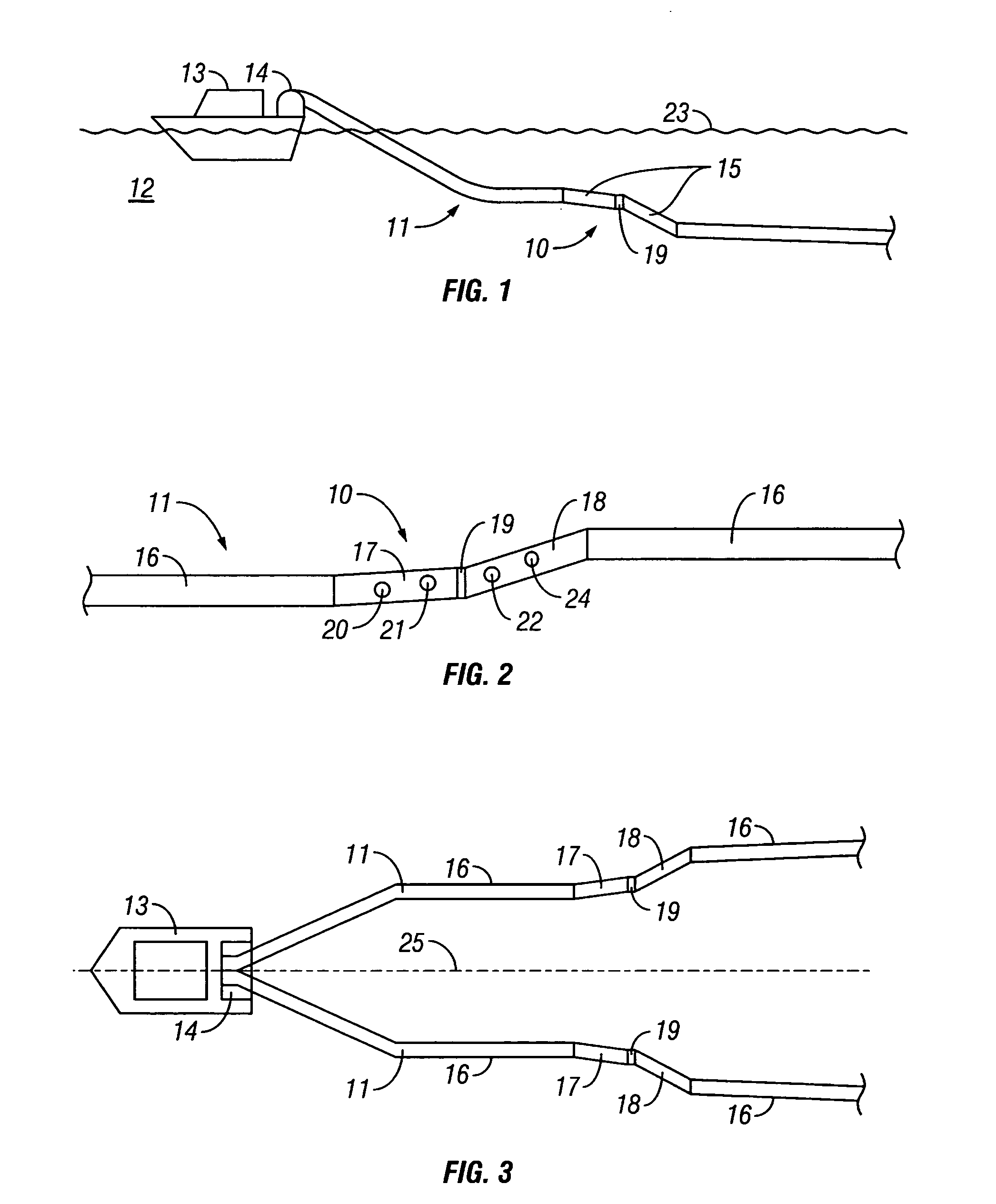Apparatus for steering a marine seismic streamer via controlled bending
a technology of controlled bending and streamer, which is applied in the field of geological prospecting, can solve the problems of birds generating turbulence, the depth controllers in accordance with these current designs suffer, and the seismic towing operations become progressively more complex
- Summary
- Abstract
- Description
- Claims
- Application Information
AI Technical Summary
Benefits of technology
Problems solved by technology
Method used
Image
Examples
Embodiment Construction
[0044]The invention is an apparatus for steering a marine seismic streamer. In one embodiment, the invention is a device that may be used to laterally shift, with respect to a towing ship, each of an assembly of seismic streamers. In another embodiment, the invention is a steering device that may also be used to vertically shift, with respect to the water surface, each of an assembly of seismic streamers. In particular, the invention is a streamer steering device that is integrated with the streamer and is of a sufficiently compact size as to allow for the streamer to be stored on a streamer winch without detaching the steering device.
[0045]The streamer steering device according to the invention generates steering force radially around a seismic streamer by bending in an appropriate direction and forcing water flow around the bend in the steering device. The bend in the steering device generates a steering force by deflecting the fluid flow of the water flowing around the towed seis...
PUM
 Login to View More
Login to View More Abstract
Description
Claims
Application Information
 Login to View More
Login to View More - R&D
- Intellectual Property
- Life Sciences
- Materials
- Tech Scout
- Unparalleled Data Quality
- Higher Quality Content
- 60% Fewer Hallucinations
Browse by: Latest US Patents, China's latest patents, Technical Efficacy Thesaurus, Application Domain, Technology Topic, Popular Technical Reports.
© 2025 PatSnap. All rights reserved.Legal|Privacy policy|Modern Slavery Act Transparency Statement|Sitemap|About US| Contact US: help@patsnap.com


